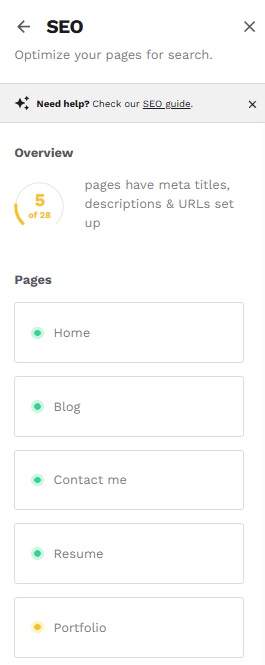Whether you're a marketer, UX designer, or creative entrepreneur, writing blog content that actually gets seen means mastering one crucial skill: keyword research. But you don’t need to spend a fortune on expensive SEO tools to do it well. In fact, there are several free, effective ways to find SEO keywords that will help your blog reach the right audience — and we’re breaking them all down below.
🔍 1. Use Google Search Suggestions
One of the most underrated (yet powerful) tools is right in front of you: Google’s search bar.
Just start typing your topic and watch the autocomplete suggestions roll in. These suggestions are based on what real users are actively searching for.
Even better:
Check out the “People also ask” section for common questions.
Scroll to the bottom for related searches, which are gold for long-tail keywords and subtopics.
📝 Example:
Type in “emotional design in UX” and you’ll see related searches like:
Examples of emotional design
Why emotional design matters
How emotional design improves UX
Each of these can become a focused blog post or H2 subheading in your article.
📈 2. Check Google Trends
Google Trends is a free tool that shows how often a keyword is searched over time. This helps you:
Compare the popularity of different terms.
Spot emerging trends.
Plan seasonal content ahead of time.
Let’s say you're writing about “UX personalization” — you can use Trends to check if it’s rising or falling in interest, or if “emotional UX” is getting more traction instead.
Pro tip: Filter by country or time range to fine-tune your results.
🧰 3. Explore Ubersuggest (Free Version)
Ubersuggest by Neil Patel offers a free SEO tool with:
Keyword ideas
Monthly search volume
SEO difficulty scores
Content suggestions
It’s a great beginner-friendly alternative to Ahrefs or SEMrush. The free version gives you a few daily searches, which is often enough for one blog post at a time.
Plug in a term like “UX design for loyalty” and discover content ideas along with keyword metrics you can use to guide your blog strategy.
🔑 4. Use Answer the Public
Answer the Public turns keyword research into a visual map of questions people are asking around your topic.
For example, enter “user loyalty” and you’ll get dozens of search queries like:
How does UX influence customer retention?
What is brand loyalty in UX?
Why do users return to an app?
These can help you structure blog posts, create FAQ sections, or build out a content series based on real user intent.
🧠 5. Combine ChatGPT + Google Trends or Autocomplete
ChatGPT is a powerful writing and ideation assistant — and when combined with the tools above, it’s a game changer.
Ask something like:
“Give me 10 SEO blog title ideas for a UX blog using trending Google searches related to ‘user loyalty.’”
Then verify those ideas in Google Trends or Ubersuggest for popularity and search volume.
This approach saves time and generates high-performing, SEO-friendly content ideas ready to go.
Did You Know How Intuitive Copyfolio Is for SEO Optimization?
If you're building a personal portfolio, getting noticed online is half the battle. That’s where SEO (Search Engine Optimization) comes in and where Copyfolio makes things surprisingly easy.
Did you know that Copyfolio was built with SEO in mind, even for users who aren’t SEO experts?
Copyfolio SEO features:
Customizable meta titles and descriptions for every page
Clean, SEO-friendly URLs
Built-in tool tips for SEO optimization
Mobile-responsive templates (a must for Google rankings)
And fast-loading pages that help with technical SEO
…you’re already a step ahead if you are building your portfolio in Copyfolio.
What makes it intuitive is that you don’t need to learn SEO jargon or install extra plugins. Copyfolio guides you subtly through best practices while you focus on writing and showcasing your work.
If you're ready to elevate your personal brand, don’t miss this chance to save. Copyfolio helps you stand out with a professional portfolio or website, and with the FRANKOVIC20 discount, it’s easier on your budget too.
Whether you're a designer, copywriter, or marketer, Copyfolio makes it feel natural to create an SEO-optimized portfolio even if you’ve never done it before.
So yes, you can have a beautiful, personal website that ranks well on search engines with no technical headaches required.
✍️ Final Thoughts
You don’t need a budget to do smart SEO — just a few tools and a little creativity. By combining Google’s own suggestions, free keyword tools, and AI ideation with ChatGPT, you’ll unlock endless opportunities to write content that attracts, informs, and converts.


